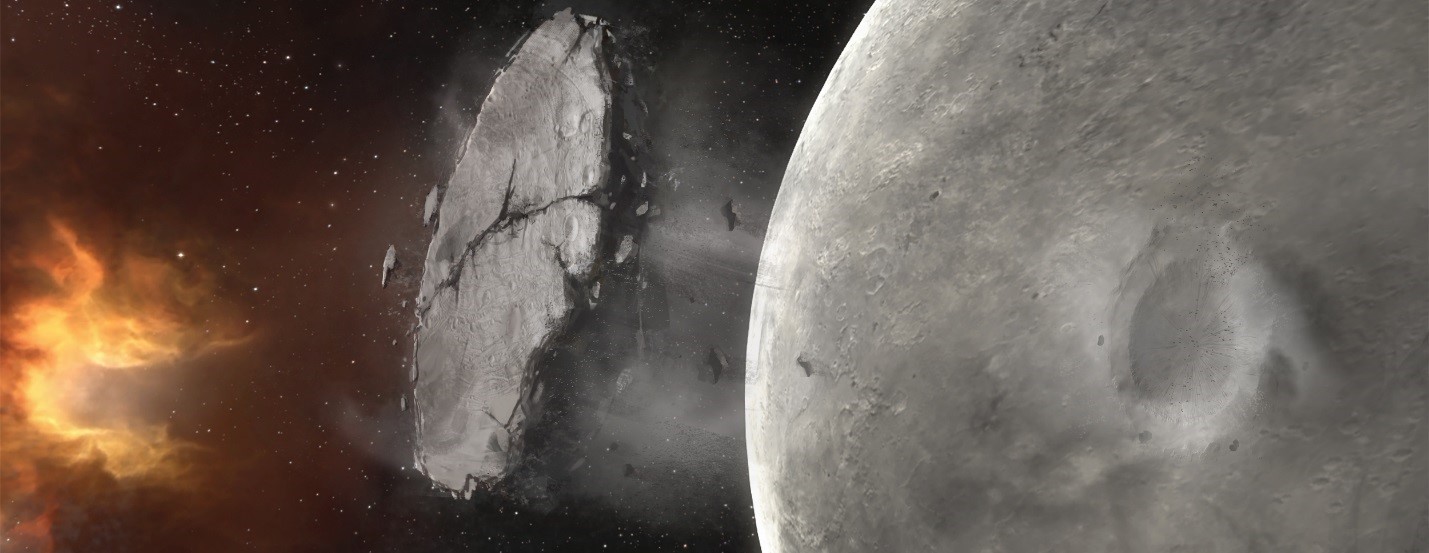Yesterday CCP introduced the final of the trio of new Upwell structures that will replace Outposts and Player-Owned Starbases: Refineries.
What's really interesting is the new mechanic that will replace current moon mining:
Refineries will come in medium and large sizes with prices between that of Engineering Complexes and Citadels. Like the earlier Upwell Structures they will have docking and tethering ability as well as the whole suite of standard structure features like storage, fitting, insurance, repair and corp offices. They will be able to fit the same set of basic Standup modules as Citadels and Engineering Complexes. As we continue to add more features to the basic Upwell framework both before and after the release of Refineries they will gain those upgrades as well. The benefits of the larger sized Refinery will primarily come from increased defenses, more generalized rigs and increased docking capabilities, with all the core Refinery functionality available in both Medium and Large versions.
Refineries are intended to be the hub of resource collection and resource processing operations. At launch these operations will largely revolve around reprocessing ore, mining moons, and reacting advanced materials together to create composites. In the future we will continue to look for opportunities to tie more resource collection and processing functions to these structures. For instance, mining buffs and support roles provided by the structure are not out of the question over the medium-term, and we are interested in investigating the possibility of shifting the sov mining upgrade role from Infrastructure Hubs to Refineries eventually.
Here’s a walkthrough of the process currently planned for the new moon mining system:This is a fascinating and fundamental change. Let's call the POS moon extraction technique "moon mining" and the Refinery technique "moon fracking".
1. A refinery that is deployed close enough to a moon can fit a special moon drilling service module. Fitting of this module will only be an option if no other drills are fit to other Refineries around the same moon, so only one structure can mine each moon at a time. This service module gives the owners the ability to designate how large of a fracking operation they wish to begin, with larger chunks taking longer time to prepare.
2. The moon drilling module begins blasting a chunk of the moon away from its surface and dragging it towards the structure. This process takes between one and several weeks depending on the choices made by the structure owner. Observers can watch the chunk move through space as a way of estimating when it will reach the Refinery.
3. Once the chunk of moon rock has completed its journey into space, the Refinery can use its drill module to detonate the chunk into a minable asteroid field. The exact time of the detonation is controlled by the owners of the Refinery within limits. If the chunk is left unattended long enough it will disintegrate into the asteroid field on its own.
4. The new asteroid field that appears with the explosion of the chunk will contain new types of valuable ores that will yield moon minerals when reprocessed. The composition of the field will depend on the composition of moon materials available in the moon. The field will generally remain far enough away from the Refinery structure that you won’t be able to effectively mine it from docking range but close enough for a pilot controlling the Refinery to be able to cover the friendly miners and/or attack uninvited guests.
5. Once the chunk has exploded, the drilling module can begin fracturing a new part of the moon to start the process again.
The time scale for this whole cycle will be controllable by the owners of the Refinery, within constraints. Longer cycle times will mean more ore generated in each explosion.
Moon mining can be an extremely lucrative activity for a corporation or alliance to engage in, but tends to be a) mostly passive and b) run by a small number of people in the organization. Once a POS is setup and the moon extracting modules running with the correct silos connected, the operation becomes one of moving extracted materials around, setting up reactions, transporting to market, and ensuring fuel levels of the tower are maintained. Overall, not a lot of people required.
Moon fracking, on the other hand, still has the setup of the Refinery and onlining of the module, but the actual resource gathering step will require a mining fleet in order to gather the extracted moon minerals from the newly formed asteroid field. Suddenly the operation has to leave the safe confines of a force field and venture out into space to get those valuable ores. Suddenly the process requires other people working together. Suddenly its possible to disrupt a moon mining operation without having to reinforce a tower.
This dramatic shift means that one of the pillars of a successful alliance / coalition, i.e. a dependable income stream that is difficult to disrupt without a large scale attack, is now more exposed to outside interference and requires more members of the organization working together to accomplish what a small number did before. This will make it easier to topple organizations from without (attacking the miners) and from within (low participation).
If I were in a large coalition right now, I'd be making plans on how to put the incentives in place to get pilots into these moon fracking cleanup fleets.




No comments:
Post a Comment